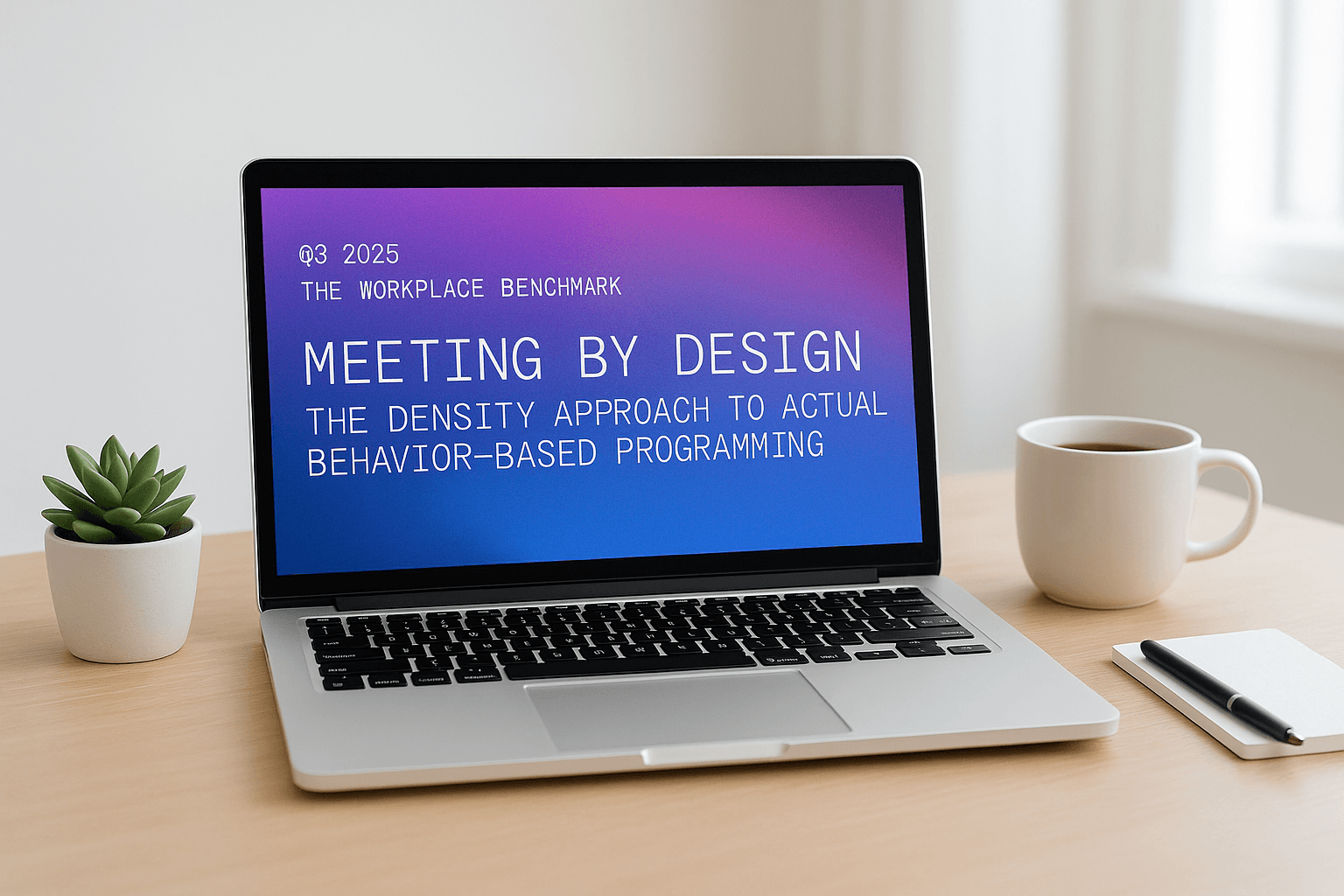How we can reshape cities by reshaping workplaces
If NYC all of a sudden knew how it was used, it would identify its inefficiencies and redesign itself.

Would it be useful to know how a city is used?
We believe the answer is, yes. If New York City all of a sudden knew how it was used, it would identify its inefficiencies and redesign itself. An entire city reliably knowing how it was used would unlock a world of new possibilities.
Andrew Farah, Density CEO, highlighted this while speaking at the Axios: What's Next Summit.
The challenge
Buildings are the most valuable assets in the world whose performance we do not measure. This lack of measurement has resulted in rather profound inefficiencies.
Pre-pandemic, 41% of the 11 billion square feet in the U.S. dedicated to workplaces sat vacant. Imagine what that number is today, when working from home has become a widely accepted practice.
Now consider that buildings account for 39% of global CO2 emissions.
The impact
Our current use of space results in wasted time, bad design, inefficient energy use, underutilization, and incalculable opportunity cost.
Making a change
The future of physical spaces is uncertain, and the only way to predict what buildings and cities should look like going forward is through data.
Understanding how spaces are used will help companies make informed decisions about the design, construction, use, and safety of their buildings.
Only through data can NYC, Boston, Berlin, Mexico City, and Mumbai reshape themselves to be more efficient and more sustainable.
For years, inefficient technology could be blamed for the lack of this data. Building an autonomous system that can make sense of the remarkable complexity of human behavior in buildings is fascinating and very hard — particularly when you value preserving a visitor’s reasonable expectation of privacy.
Tackling this technological challenge has been our focus since the founding of Density in 2014. We set out to create better tools of measurement because measurement will lead to improvement.
Better measurement tools will help companies:
- Design better employee experiences that attract and retain top talent.
- Create more efficient spaces based on how they’re used — not how you think they’re used.
- Save on avoidable lease expenses by showing you how to use your existing space better.
Historically, we have designed and used buildings based on observation, trends, surveys, and precedent. That no longer suffices.
Our relationship with the workplace has never been more complicated than it is today. Workers overwhelmingly prefer a hybrid work model. We can no longer assume utilization based on set 9-5 schedules.
- We need the ability to navigate 10 million sqft of space as easily as you pinch-to-zoom.
- To replay how people use space without invading their privacy.
- To see if a space is available in real-time.
- To compare the performance of a room or neighborhood or floor or building.
- To find successful spaces, identify productive behaviors, and see where there is collision, lingering, or focus.
- We need the ability to A/B test physical space.
Our mission is to measure and improve humanity’s footprint on the world. In time, our goal is to help reshape cities.
But to reshape cities, we must begin with the workplace.
Key Takeaways

DisruptCRE founder shares how corporate real estate is changing
Companies are moving employees from underutilized offices into "space as a service” options with utilization data.
Watch now
Half of offices are empty but you still can’t find a meeting room
Employees waste up to 30 minutes a day looking for a meeting room to meet in workplaces.
Read moreMost recent

Meeting space playbook: programming ratios that really work
Forget static formulas. This new research-driven playbook shows how to use real behavior to right-size your office for today’s meetings.
.png)
Room raiders: The office upsizing epidemic
Tiny teams hogging big rooms leave large groups stranded—welcome to the new war for meeting space!

Why empty seats make quiet zones a focus paradise
Relax, workplace planners—low quiet zone utilization rates are expected, leading to happier employees, deeper focus.

The summer office slump is real. And so is the Friday fade.
Office attendance drops to 41% in July—and Fridays in December? Practically extinct at just 21% utilization.
Explore other Density Products
Atlas for Workplace
Insights for the workplace that help you cut costs and deliver better spaces.
Learn more